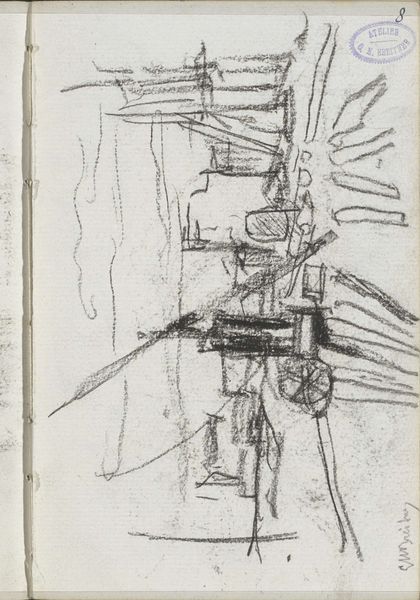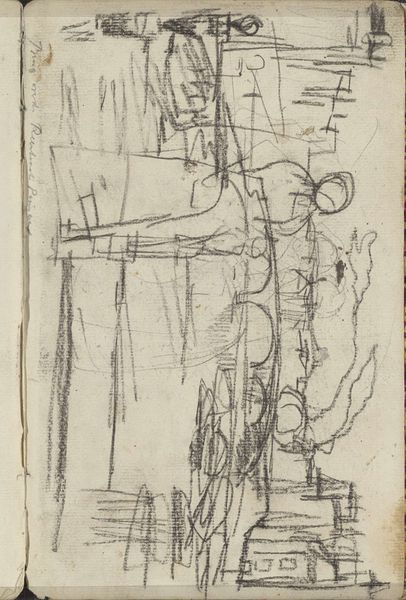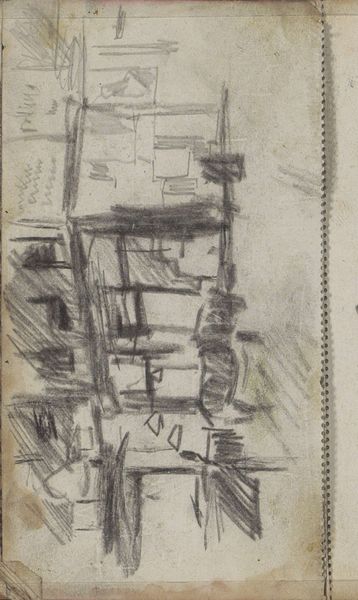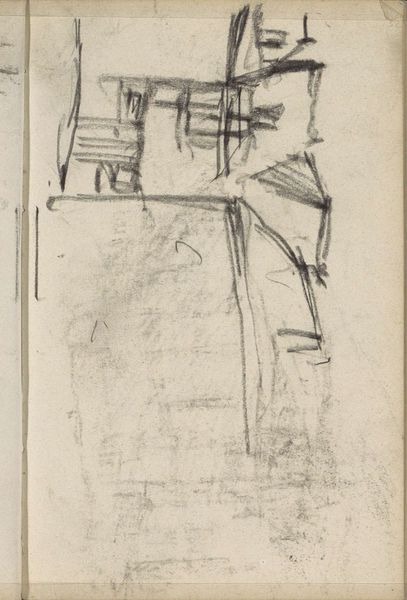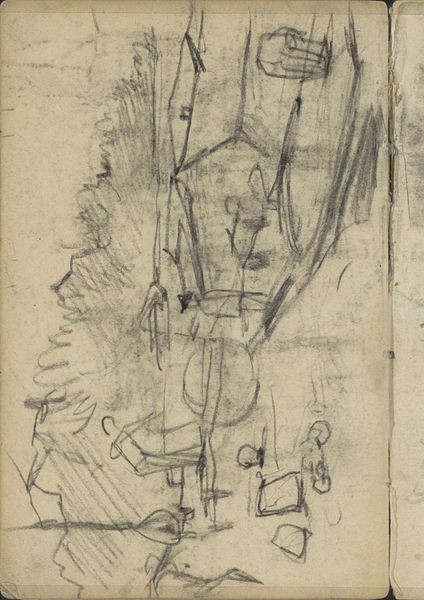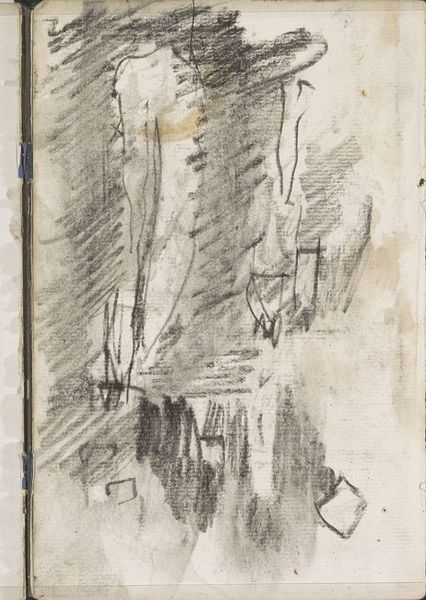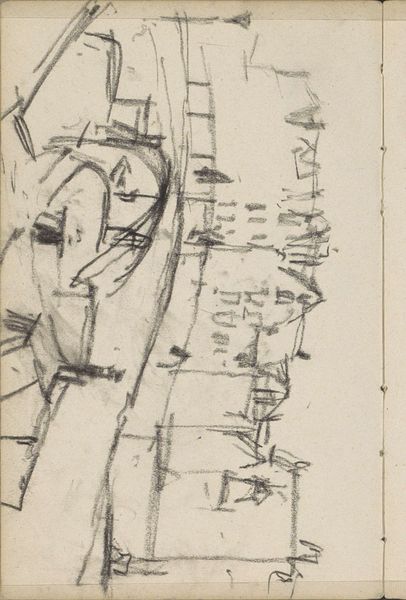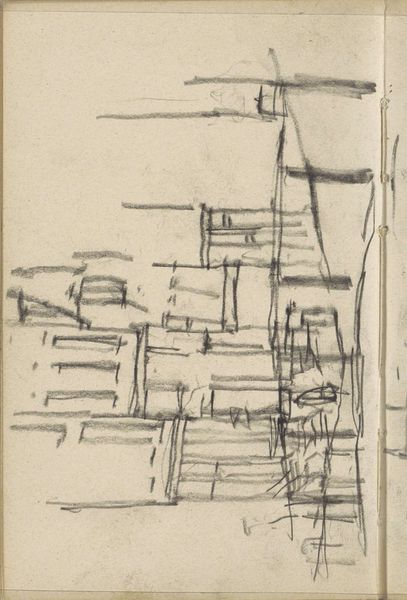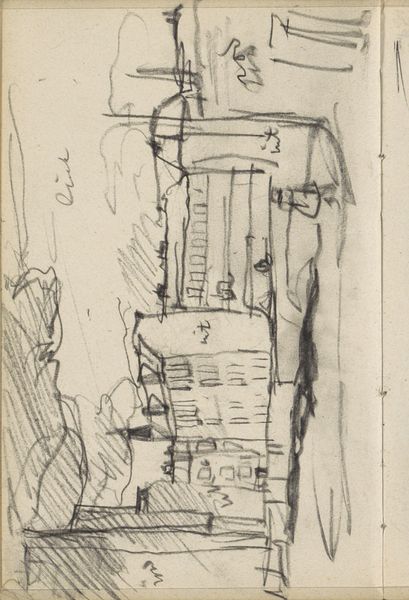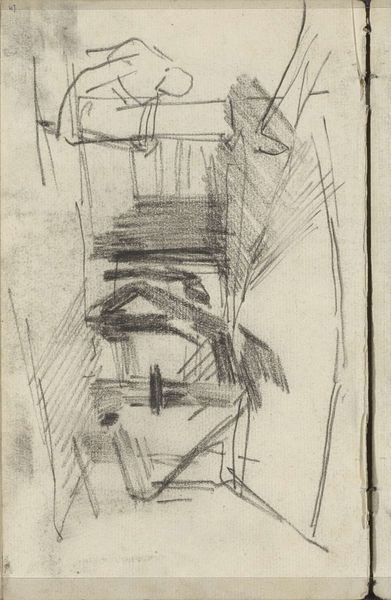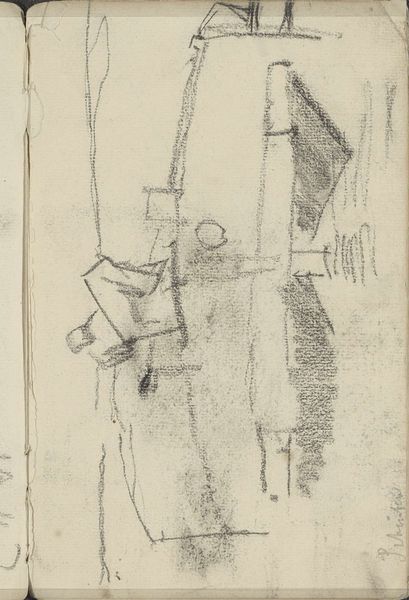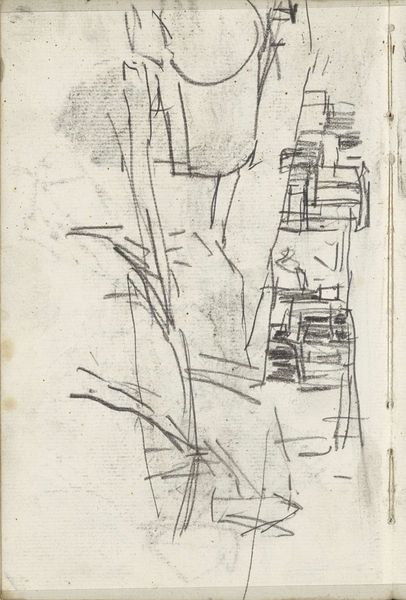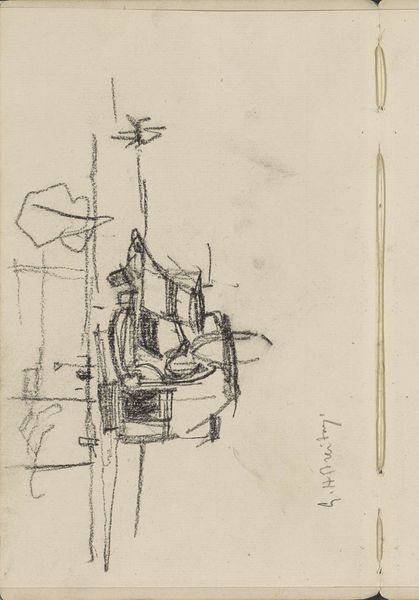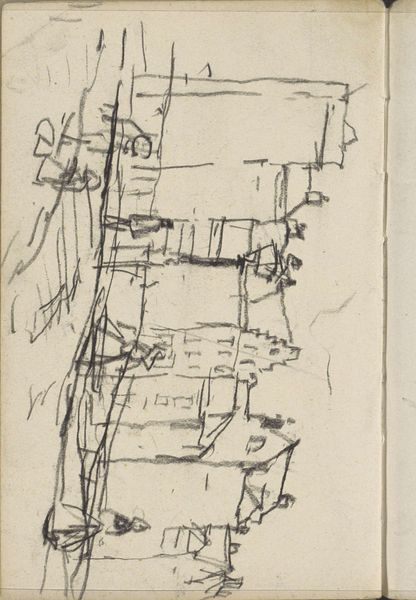
#
quirky sketch
#
sketch book
#
personal sketchbook
#
idea generation sketch
#
sketchwork
#
pen-ink sketch
#
sketchbook drawing
#
storyboard and sketchbook work
#
sketchbook art
#
initial sketch
Copyright: Rijks Museum: Open Domain
Curator: This quick sketch possesses a striking energy, doesn’t it? I am immediately drawn to the freedom of the marks, it's so sparse, yet suggestive. Editor: Indeed! This is a sketch by George Hendrik Breitner titled “Gezicht in Amsterdam met water” which translates to “View in Amsterdam with water", placing it firmly in Breitner's beloved subject matter. Dating from between 1886 and 1898, it’s currently held at the Rijksmuseum. Curator: Looking at this today, knowing Breitner's broader context, it speaks to the rapid industrialization of Amsterdam, doesn't it? This almost violent application of charcoal…is it an echo of the disruptive force of modernization? Editor: Breitner, who was often referred to as the "painter of the gray Amsterdam", undoubtedly aimed to capture the dynamism of the city. But in the latter half of the nineteenth century, sketching, and especially these rapidly executed sketches, were also becoming critical to an artist’s practice; consider their role in the rising prevalence of Impressionism. Curator: That’s right. This work reflects shifting social relations in urbanizing environments as well as his own practice. Did Breitner, through such seemingly casual glimpses, aim to democratize representation? And to challenge academic art? Editor: Well, art institutions, which were still upholding rigid standards, undoubtedly played a role here, in that they would often frown upon such "unfinished" works. His impressionistic leanings, especially his keen eye for capturing a fleeting moment in these initial marks, might reflect a resistance to those established academic styles. Curator: Seeing this alongside his finished canvases allows one to contemplate the position of marginalized bodies in society as well. Are these lines echoing bodies pressed against other bodies as people crowd Amsterdam's expanding borders and public transit? Editor: An insightful consideration. As sketches gained validation as works of art in their own right, a changing public began placing increasing value on their "authenticity" and spontaneity. Curator: Understanding the relationship between art, the market, and social context remains fundamental to Breitner’s significance in art history. Editor: Indeed. He navigated those waters deftly. This quick peek into Breitner's world certainly illuminates a broader societal shift toward embracing change, and artistic individualism.
Comments
No comments
Be the first to comment and join the conversation on the ultimate creative platform.
